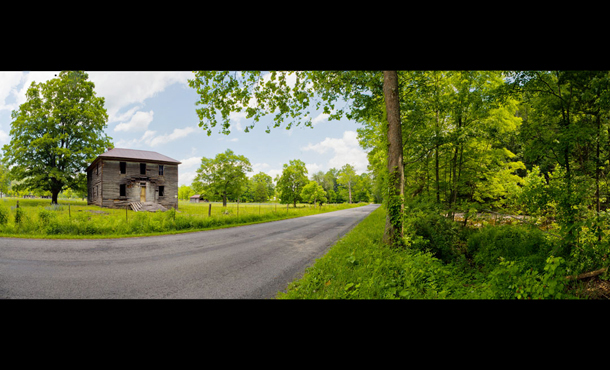HARRISONBURG, VA. – The first public art exhibit of fall semester at Eastern Mennonite University (EMU), which opens Saturday, Sept. 3, is featuring photography by Steven Johnson, Scott Jost and Howard Zehr in the Margaret Martin Gehman Art Gallery in University Commons.
The show, “Down to the River,” documents the Shenandoah River and tributaries of the Chesapeake Bay. A reception for the artists will be held 4-6 p.m., opening day in the gallery.
Steven Johnson and Howard Zehr are professors at EMU. Johnson is an associate professor in the Visual Arts and Communications department while Zehr is a professor in the Center for Justice and Peacebuilding.
Jost, a former EMU professor, teaches photography and design at Bridgewater College in Bridgewater, Va.
The exhibit is open for viewing daily during hours when Common Grounds is open through Oct. 9, free of charge.
A preview documentary was produced by Tim Kauffman, a 2011 EMU Visual and Communication Arts (VaCA) graduate and Conrad Yutzy, a student in VaCA. Their work can be found on YouTube.
For more information contact Paulette Moore at paulette.moore@emu.edu.
About the photographers
Steven Johnson
Johnson is a featured artist in RUMINATE and Rock and Sling magazines and his work has been published in Orion, Blue Ridge Country and National Geographic Traveler. His work in this exhibit centers on whirlpools and swimming holes.
“Like our own bodies, whirlpools take the molecules of the material world and organize them into temporary dynamic systems,” said Johnson. “For me, these abstract images of whirlpools on the north fork of the Shenandoah River serve as metaphors for the energy, beauty and brevity of life.”
Referring to swimming holes, Johnson added, “Nestled in the deep bends of rivers and creeks, the swimming holes of Virginia invite a diverse company of water lovers seeking respite from the summer heat. Some areas are crowded and public, while others are jealously guarded secrets.”
“As a photographer, I’m drawn to the freedom of bodies in water and the acrobatics of bodies hurtling through space,” said Johnson. “In an age of polarization, I’m also fascinated by the short-term communities that develop in these common areas. Political and cultural differences temporarily fade in the cool waters.”
Additional photos may be viewed at www.stevendavidjohnson.com/
Scott Jost
Jost is a contributing photographer to The Great Valley Road of Virginia: Shenandoah Landscapes from Prehistory to the Present. Jost’s portfolio of photos, called “Source and Confluence: Exploring the Chesapeake Bay Watershed,” looks at 45 confluences and the origins rivers and streams in Virginia, West Virginia and Maryland.
“The Chesapeake Bay and its watershed represent a vast historical, agricultural and ecological treasure,” said Jost. “Ultimately, I hope my work can contribute to an enhanced awareness of and appreciate for our local, regional and national waterways.”
This past summer, Jost followed the Susquehanna River – one of the Chesapeake Bay’s largest confluences – from its origin in Cooperstown, N.Y., to Duncannon, Pa. The confluences Jost photographed along the way will be revealed in the show.
“I hope to contribute, through photography, to a greater understanding of the historical Chesapeake Bay and its watershed and to reflect on its prospects for the future,” said Jost.
Additional photos may be viewed at www.scottjost.net/
Howard Zehr
Zehr has appeared as photographer and author in three books published by Good Books and has had his work featured in a variety of publications and exhibits. His portfolio, called “The Little Shenandoah,” chronicles the north fork of the Shenandoah River.
“There are two fixed points in the project so far,” said Zehr. “First, each photograph includes direct evidence of the river… Second, I am using a panoramic format because it seems both appropriate and challenging.”
Zehr focused on historical and contemporary interactions between the river and humans.
“Numerous remnants of mill races, dams, bridges and other artifacts point to the river’s history. I am fascinated by these signs and the interplay between private and public spaces,” said Zehr.
Additional photos may be viewed at www.howardzehr.com.
